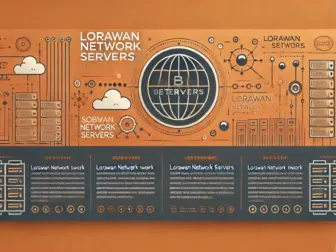Tag - TTN
Blog , March 3, 2024 , ChirpStack, Device management, iot, LoRaWAN, LoRaWAN Base Station, LoRaWAN Gateway, LoRaWAN Network Server, LPWN, Network Server, The Things Network, TTN
Exploring the Transformative Potential of The Things Network (TTN) for IoT Connectivity
Exploring the Transformative Potential of The Things Network (TTN) for IoT Connectivity
The Internet of Things (IoT) is revolutionizing how we interact with the physical world. At the forefront of this revolution is The Things Network (TTN), a global, open-source, and decentralized network provider for IoT devices. TTN utilizes LoRaWAN (Long Range Wide Area Network) technology to facilitate low-power, long-range communication between IoT devices and the internet, creating immense opportunities for innovation in various sectors.
Unlike traditional wireless networks, TTN is designed to support devices that require low bandwidth and have a long battery life, which is essential for many IoT applications. These devices can range from simple sensors monitoring environmental conditions to more complex systems tracking assets across cities. With TTN, these devices can communicate over distances of several kilometers, even in challenging urban or rural environments.
The collaborative nature of TTN is one of its most significant advantages. By allowing individuals and companies to set up their own gateways, it creates a crowd-sourced network that benefits all users. This approach not only extends the network’s reach but also fosters community engagement and innovation. Users can share their gateways, expand the network’s coverage, and contribute to a truly global IoT infrastructure.
Furthermore, TTN’s open protocol and API make it an attractive option for developers. By providing easy access to network functionalities, TTN accelerates the development process, allowing for rapid prototyping and deployment of IoT solutions. This is crucial in an industry where speed-to-market can be a determining factor in success.
The integration of TTN into smart city initiatives exemplifies its transformative potential. Cities around the world are leveraging IoT to optimize public services, reduce costs, and improve citizens’ quality of life. With TTN, municipalities can deploy sensors to monitor air quality, traffic flows, and waste management systems without incurring the high costs associated with traditional cellular networks. By using TTN’s open network, cities can create a mesh of connected devices that provide real-time data to improve urban living conditions.
In the agricultural sector, TTN plays a significant role by enabling precision farming. Farmers can use IoT devices connected to TTN to monitor soil moisture, crop health, and weather conditions. This data allows them to make informed decisions about irrigation, fertilization, and harvesting, leading to increased yields and reduced resource consumption.
TTN also has implications for disaster response and environmental monitoring. In the event of natural disasters like floods or wildfires, TTN-connected sensors can provide critical information to first responders, helping to save lives and protect property. Similarly, environmental monitoring can benefit from TTN’s network, enabling the tracking of pollution levels, wildlife movements, and deforestation activities.
To ensure privacy and security, TTN has implemented strong encryption standards for data transmitted over its network. This means that sensitive information remains protected from unauthorized access, giving users peace of mind when deploying IoT devices in critical applications.
In conclusion, The Things Network (TTN) is paving the way for a more connected and efficient future through its innovative approach to IoT connectivity. Its low-power, long-range communication capabilities, coupled with its open and collaborative model, empower developers, businesses, and communities to build a diverse range of IoT applications. As TTN continues to grow and evolve, it will undoubtedly play a pivotal role in the advancement of smart technologies and the realization of a truly interconnected world.

